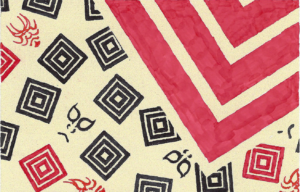
I’ve worked for years to deal with stress better and handle adversity with more grace.
A lot of stuff I’ve done has helped…to a point. Yet I noticed there was something in me that was stubbornly resistant to the yoga, meditation, long walks, positive affirmations, etc. etc.
This really bugged me. Why didn’t these things “fix” me?
I wanted to have deep confidence in who I was and what I stood for. Instead I often doubted my decisions and actions. I questioned the value of who I was. Ironically, I’ve always found it easy to appreciate and advocate for other people. But I seemed incapable of advocating for myself.
Finally, I realized with the help of some talented teachers that my stuckness was a symptom of unaddressed trauma.
Initially, I had a lot of resistance to the idea that I experienced trauma. My life has not been one of privation or violence. I grew up in an affluent suburb with a loving family. I’ve been a white-collar professional all my life. From the outside, my life looks pretty boring. How could I have had traumatic experiences?
It’s helpful to remember that trauma is something experienced by our bodies and nervous system. A definition of trauma which I find helpful is from Resmaa Menakem, author of My Grandmother’s Hands. Menakem defines trauma as “anything that is too much, too soon, or too fast for your nervous system.”
Regardless of how our minds might label an event, trauma is what our bodies and nervous systems experience as too much, too soon, or too fast.
When I was in middle school, two girls regularly bullied me. They would catch me when I was alone and call me names like ugly, baldy, and loser. I would flinch and they would laugh. Although they never touched me physically, I always felt sucker punched. I’d feel nauseous, have trouble breathing, and my heart would pound. I would feel humiliated and powerless.
Another kid might have had this experience and shrugged it off. My body and nervous system experienced this bullying as trauma.
What’s important to understand is that whatever the source, we carry trauma in bodies. And unresolved trauma can keep us stuck in a painful cycle of remembering, retelling, and reliving the experiences.
I know my trauma has been activated when something happens and my emotional-physical response is entirely out of proportion to the experience.
Case in point, while walking through my neighborhood on a beautiful snowy day I saw a group of people letting their dogs romp in the snow.
The dogs were not on leashes and began to bark and run toward me. I’m not afraid of dogs but I am wary of dogs I don’t know especially when they’re off leash.
I yelled, “Hey, watch your dogs!” at the people milling around but they ignored me and continued to chat.
I felt absolutely furious. I didn’t say anything because I was afraid of how angry I would sound. It was like I was invisible to these people! Perhaps I was.
In that moment, I flashed back to my podgy middle-school self being called “Baldy” by the mean girls. All those emotions and physical sensations came flooding back: shame, resentment, helplessness, and despair.
It’s difficult when we’re in the grip of these emotions and sensations. For me, it can feel like I’m having an out of body experience because I’m so caught up in the moment.
We all have ways to deal with these incidents. I, myself, had quite a variety of coping mechanisms: zoning out with TV, overeating, drinking too much, over-working, and taking my upset out on any one or anything unfortunate enough to cross my path.
Not saying coping mechanisms aren’t valid. We all use them. The problem for me has been that the coping mechanisms weren’t addressing the trauma that was keeping me stuck.
Coping mechanisms are the equivalent of aspirin. They cut the intensity of pain but they don’t address the source of the pain.
I decided to start directly addressing these pockets of trauma. One thing that works remarkably well is to do what I think of as a “soft reset” for my nervous system.
What works for me is the practice to get connected with my environment and body. To witness whatever is happening from a place of compassion. As I do this, I recite the Loving Kindness Blessing: May I be safe, may I be healthy, may I be happy, may all things come with ease.
I don’t need to do this perfectly. I just need to remember to do it.
What I’ve learned is that self-compassion and healing needs to proceed empowerment. I’ve found that with inner peace, I am able to be that advocate for myself and what I care about. It is key to what makes me effective in the world.
Note: I am especially grateful to Larisa Noonan who taught me this practice.
